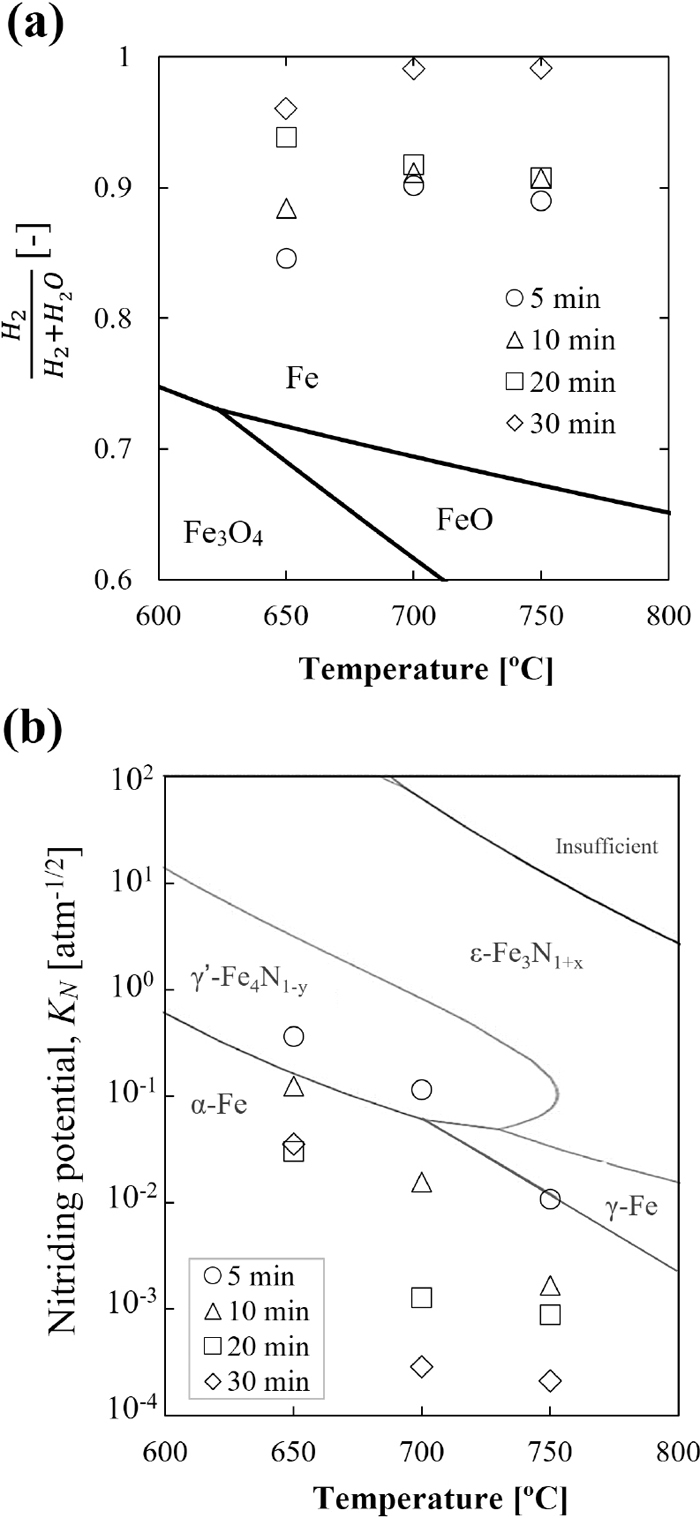- 著者
- Itsuki Iwamoto Ade Kurniawan Hiroki Hasegawa Yoshiaki Kashiwaya Takahiro Nomura Tomohiro Akiyama
- 出版者
- The Iron and Steel Institute of Japan
- 雑誌
- ISIJ International (ISSN:09151559)
- 巻号頁・発行日
- vol.62, no.12, pp.2483-2490, 2022-12-15 (Released:2022-12-15)
- 参考文献数
- 38
- 被引用文献数
- 2
As one of the hydrogen carriers, ammonia has become one promising candidate as a reducing agent for implementing hydrogen-based ironmaking to reduce CO2 emissions. On the other hand, the abundant high combined water (CW) iron ore has recently been investigated as a raw material for ironmaking. Goethite (FeOOH), the main component of high-CW iron ore, can change to porous hematite (Fe2O3) by dehydration, enhancing its reactivity. This paper describes the fundamental study of the ore reduction behavior using ammonia as reducing agent. The effects of different ore types (i.e., high- and low-CW ores), reduction temperatures (i.e., 650, 700, and 750°C), and conditions of post-reduction treatments (i.e., quenching by NH3, fast- and slow- quenching by inert gas) on ore reduction behavior. The results reveal that the dehydrated high-CW one exhibits a higher ammonia utilization rate and is reduced faster due to the high specific surface area of the pores generated from the ore dehydration. The reduction degree of the sample increased at a higher temperature. However, in contrast, the nitriding degree decreases since the decomposition of nitrides occur highly at elevated temperatures. During quenching at temperatures lower than 700°C, the metallic Fe in the sample was nitrided in the presence of NH3. In contrast, the nitrides were easily decomposed into metallic Fe in the absence of NH3 at 700°C. This finding suggests that the quenching conditions significantly affect the generated phases. Thus, the generated phases of the reduced ore could be easily controlled in the post-reduction process.
- 著者
- Keita Tanahashi Yusei Omura Hidekazu Naya Yuji Kunisada Norihito Sakaguchi Ade Kurniawan Takahiro Nomura
- 出版者
- The Iron and Steel Institute of Japan
- 雑誌
- ISIJ International (ISSN:09151559)
- 巻号頁・発行日
- vol.62, no.12, pp.2578-2586, 2022-12-15 (Released:2022-12-15)
- 参考文献数
- 30
- 被引用文献数
- 1
High-temperature pressure swing adsorption (HT-PSA) is a promising energy-saving approach for oxygen production from air. Ca2AlMnO5+δ, a Brownmillerite-type perovskite, is a promising sorbent for HT-PSA because of its remarkably high oxygen storage capacity (up to 3.3 wt%). In this study, we investigated the redox thermodynamics of Ca2AlMnO5+δ by pressure–composition–temperature (PCT) measurements and investigated the HT-PSA performance of Ca2AlMnO5+δ pellets in a 100 g-scale packed-bed-type reactor. PCT measurements revealed that Ca2AlMnO5+δ can reversibly separate 2.2 wt% of oxygen per cycle under equilibrium conditions between ambient oxygen partial pressure and 5×10−4 MPa at 525°C. However, in a 5 min switching HT-PSA test, Ca2AlMnO5+δ pellets were able to reversibly separate less than 1 wt% oxygen per cycle, which is significantly lower than that estimated from the thermodynamic properties of Ca2AlMnO5+δ. On the other hand, the exothermic oxygen storage and endothermic oxygen release reactions cause significant temperature variation of the packed bed. This study clarifies that, in order to increase the energy efficiency of oxygen separation by HT-PSA, there is a need to compensate for the heat of reaction, which changes the reactor temperature in a direction that interferes with the reaction.

